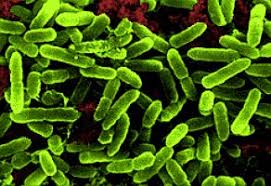Description
Colistin is an antibiotic drug. It’s a mixture of at least 30 polymyxins, of which the most abundant are the polymyxin E1 and the polymyxin E2, also called colistin A and B.

It was abandoned in the early '80s because of its nephrotoxicity and neurotoxicity. Now It’s returned to be used, as is sometimes the only weapon against some sort of multi-resistant Gram-negative bacteria.

The polymyxins are produced by certain strains of the bacterium Bacillus polymyxa, subspecies Colistinus.
Colistin - Wikipedia
Polymyxin E - Wikipedia
Various kinds of databases contain informations about Colistin:
The Italian official sites doesn’t provide specific information about this drug:
Among the other Italian sites, that of Dr. Anibaldi, a hospital doctor who collected his contributions and those of other qualified professionals, is among the most effective.
Classification
Polymyxins are lipopeptides, consisting of a cyclic protein chain with a tail also proteic, ending with a fatty acid. Each molecule has 5 amino groups and then 5 positive charges under physiological conditions.
Therapeutic indications
The spectrum of action of polymyxins is limited and selective and it is aimed against Gram-negative bacteria, particularly against the Pseudomonas aeruginosa, the Acinetobacter baumannii and the Staphylococcus aureus.
Some databases of bacteria or microorganisms in general are:
Pharmacokinetics
Polymyxins are not absorbed orally, with the exception of infants and cases of digestive mucosa alterations. The passage into the blood stream occurs only after intramuscular or intravenous administration. In this case the sodium salt of the CMS is administred. It is hydrolyzed in vivo, releasing Colistin.
The plasma half-life of colistin is 2-3 hours, but it extends considerably in renal failure. The plasma protein binding is low.
This antibiotic is eliminated primarily by simple renal glomerular filtration.
The database PK/DB classifies the active ingredients according to their pharmacokinetic properties.
Molecular mechanism
The polymyxin molecules act as a cationic surfactant, thanks to their five amino groups positively charged at physiological pH. They replace the counterions Ca2 + and Mg2 + of the phosphate groups of the bacteria lipid membranes. This causes increased permeability, resulting in lysis and cell death.
Side effects
In the case of oral administration formulation some side effects affect the gastrointestinal tract, with possible nausea, vomiting and diarrhea and the apparatus integumentary, with possible hypersensitivity skin reactions.
In the case of the parenteral administration formulation they can also affect the urinary tract (nephrotoxic effects) and the nervous system (neurotoxic effects).
Among the side effects witch affect the nervous system there is the Myasthenia, an autoimmune neuromuscular disease. It is caused by circulating antibodies that block acetylcholine receptors at the postsynaptic neuromuscular junction. Colistin is a Myasthenia inductor drug.
Giovanni Giacalone
Pharmacycode
Myasthenia_gravis_new_alert
Toxicity
The use of colistin was abandoned in the early '80s, due to its nephrotoxicity (tubular damage, increased nitrogen, albuminuria, hematuria) and its neurotoxicity. Today is back in vogue, as it is one, if not the only, weapon in the fight against some multidrug-resistant Gram-negative bacteria, such as Pseudomonas aeruginosa, Acinetobacter baumannii and Staphylococcus aureus. But there are also those who believes that it is not so harmful. Critical Care 2006
Database: TOXNET
The ISS indicates the danger of CMS use in patients with cystic fibrosis.
A colistin circle accumulation occurs in the case of patients with renal failure, because of their difficulties to its disposal. In these subjects, lower doses should be used. The informations about the treatment of patients undergoing dialysis are few. In this case, colistin is disposed, but further studies are needed to establish an appropriate dose.
Database of clinical evidence of treatment with drugs: TRIPDATABASE